- +441217586456
- [email protected]
- 33 All Saints Drive B744AG
Welcome to the VAT-Free Era: Retrofit Battery Storage Installations at EV-PV
UK Government Slashes VAT on Battery Storage Systems to 0%
Unlock the Full Potential of Sustainable Energy with Battery Storage in the UK
February 1st, 2024 marks a significant milestone in the world of sustainable energy solutions. We are excited to announce that the UK government has eliminated VAT on retrofit battery storage installations, making energy storage more affordable and accessible for homes and businesses across the country.
At EV-PV, we are proud to be at the forefront of this historic change, offering a wide range of battery storage solutions, from home battery storage to commercial battery storage options. Whether you are looking for lithium-ion battery storage or lithium polymer battery storage, we have a solution that meets your energy needs.
Maximise Your Energy Independence with Home Battery Storage
Imagine unlocking the full potential of renewable energy with home battery storage solutions in the UK—without the need for solar panels. Our home battery storage systems without solar allow you to store excess energy for later use, reducing your reliance on the grid and lowering your electricity bills.
We offer a variety of home battery storage options to suit different needs, including 5kW battery storage, 10kW battery storage, and 10kWh battery storage systems. Whether you need a small solution for your home or a larger system for increased energy independence, we’ve got you covered.
The Benefits of Commercial Battery Storage
For businesses looking to lower energy costs and reduce their carbon footprint, commercial battery storage is a game-changer. We provide tailored solutions for commercial solar battery storage that can be integrated seamlessly into your current renewable energy setup, ensuring your business runs efficiently while contributing to a greener future.
Why Choose EV-PV for Your Battery Storage Needs?
Expert Installation: Our team of professional local solar battery storage installers is experienced in installing both AC-coupled and DC-coupled battery storage systems.
Top-Quality Products: We work with the best brands to offer best home battery storage UK solutions, including Fox Battery Storage systems, which are known for their reliability and long lifespan.
Government Grants: Take advantage of government grants for solar battery storage to reduce the initial costs of installation and maximise your return on investment. At the moment the government are giving zero % VAT as their current grant incentive.
Cost of Battery Storage Systems
At EV-PV, we provide competitive pricing for 10kW battery storage, 15kW battery storage, and 20kW battery storage systems. We offer cost-effective solutions for battery storage without solar as well as solar battery systems, ensuring you get the best value for your investment.
Battery Storage Costs at a Glance:
5kW Battery Storage Cost: Affordable solutions for smaller homes or energy needs.
10kW Battery Storage Price: A powerful option for larger households or businesses.
Cost of 10kW Solar System with Battery Storage: We’ll help you calculate the full cost of installing a solar system with battery storage.
Contact EV-PV Today to Learn More
Join us in celebrating this VAT-free era and take advantage of the benefits that retrofit battery storage installations bring. Whether you need 5kW, 10kW, or even 20kW battery storage, our team is ready to guide you through the installation process, ensuring a seamless experience and optimal results.
Contact us today to learn more about how EV-PV can help you harness the power of sustainable energy while enjoying the financial advantages of VAT-free battery storage systems.
Fitting a Battery to Your Existing Feed-in Tariff (FiT) System
If you are already benefiting from the UK’s Feed-in Tariff (FiT) scheme, you may be wondering if it’s possible to integrate a battery storage system with your current setup. The good news is that adding a battery storage system to your existing FiT installation is an excellent way to maximize your energy savings and increase your energy independence, all while still receiving payments for the energy you generate.
How Does It Work?
A battery storage system can store excess energy generated by your solar panels during the day, allowing you to use this energy when the sun isn’t shining—whether in the evening or on cloudy days. By fitting a battery to your existing FiT system, you can significantly reduce your reliance on the grid and make the most of the energy your panels produce. This helps you avoid paying for electricity when rates are high while contributing to a greener, more sustainable future.
Key Considerations for Fitting a Battery to FiT Systems:
Compatibility:
Adding a battery storage system to your existing solar setup is typically straightforward. However, it’s important to ensure that the system you choose is compatible with your current solar inverter and electrical setup. Our experienced team will assess your system and provide tailored advice on the best way to integrate a battery.Exporting Energy:
One of the key benefits of the FiT scheme is that you receive payments for exporting surplus energy to the grid. With a battery system in place, the amount of excess energy you need to export can be reduced, allowing you to store more energy for personal use. While you’ll still receive FiT payments for any energy exported, having a battery means you can store and use more of your generated power.Smart Meters & Monitoring:
Modern battery systems often come with smart meters that help you monitor your energy usage and storage. This can be a great way to optimize your energy consumption and see how much you are saving by storing and using your own energy rather than purchasing it from the grid.Impact on FiT Payments:
The UK government’s rules for FiT payments allow you to continue receiving payments as long as you maintain your eligible solar panel system. Installing a battery storage system does not affect your FiT eligibility, meaning you can continue to benefit from both your solar energy generation and the additional energy savings from battery storage.
Benefits of Adding Battery Storage to Your FiT System:
Increased Energy Independence: By storing energy for later use, you reduce your reliance on the grid, even during times of peak demand.
Maximised Financial Benefits: A battery storage system ensures that more of your generated energy stays within your home or business, reducing your energy bills.
Environmental Impact: Storing excess solar power in a battery means you’re using more renewable energy and less fossil-fuel-generated electricity from the grid.
Take the Next Step!
If you’re already benefiting from a Feed-in Tariff and are interested in battery storage, now is the perfect time to upgrade your system. At EV-PV, we offer expert guidance on fitting a battery storage system to your existing solar setup, ensuring you can continue to enjoy FiT payments while maximizing the efficiency of your renewable energy system.
Contact us today to learn more about adding a battery storage solution to your Feed-in Tariff system, and start making the most of your energy!
EV-PV – Shaping a Sustainable Future, One Retrofit Battery Storage at a Time!
The best battery storage for your home depends on several factors, including your energy needs, budget, and the size of your existing solar system (if applicable). Here’s a breakdown of the most common types of battery storage systems for residential use, along with some key considerations to help you choose the best option for your home.
1. Lithium-Ion Battery Storage
Best for: Reliability, Efficiency, and Long-Term Investment
Pros:
High energy efficiency (typically 90% or more).
Long lifespan (usually 10-15 years).
Compact and lightweight.
Fast charging and discharging.
Popular Options:
Tesla Powerwall: One of the most well-known options, offering 13.5 kWh of storage capacity and a long warranty.
LG Chem RESU: Offers various capacities (up to 10 kWh), with solid performance and long warranties.
SonnenBatterie: A premium option known for smart home integration, with a range of 5 kWh to 15 kWh.
Cons:
Higher initial cost compared to some alternatives.
Requires professional installation.
2. Lithium Iron Phosphate (LiFePO4) Battery Storage
Best for: Safety and Longevity
Pros:
Extremely safe with a lower risk of fire or thermal runaway.
Long lifespan (often 15-20 years).
Lower cost compared to lithium-ion batteries.
Popular Options:
BYD Battery-Box Premium: Offers a range of capacities and is known for its durability and safety.
Cons:
Slightly lower energy density compared to standard lithium-ion batteries.
Can be more expensive than some lead-acid alternatives.
3. Lead-Acid Battery Storage
Best for: Budget-Conscious Consumers
Pros:
More affordable upfront cost.
Good for smaller, off-grid setups.
Popular Options:
Trojan Battery: Offers both flooded and sealed lead-acid batteries for home storage.
Cons:
Shorter lifespan (typically 5-7 years).
Less efficient than lithium-ion batteries.
Requires regular maintenance.
4. Saltwater Battery Storage
Best for: Environmentally-Conscious Users
Pros:
Non-toxic and environmentally friendly.
No risk of fire or harmful chemicals.
Longer lifespan (up to 20 years).
Popular Options:
E3/Solar: Known for its environmentally friendly, long-lasting batteries.
Cons:
Lower energy density compared to lithium-ion and lead-acid batteries.
Not as widely available or well-known yet.
5. 10kW to 15kW Battery Storage
Best for: Larger Homes or High Energy Demands
Pros:
These systems are ideal if you have higher energy consumption, such as electric heating or cooling systems.
Great for larger homes, or if you want to store more energy for later use.
Popular Options:
Tesla Powerwall 2 (13.5 kWh) or Sonnen eco (10-15 kWh).
Cons:
Higher initial investment.
Takes up more space than smaller systems.
Key Factors to Consider:
Battery Capacity (kWh):
Determine how much energy you need to store. For a typical home, a 5kW to 10kW system is common, but larger homes or higher energy usage may require a 15kW or 20kW system.
Cycle Life and Warranty:
Choose a battery that has a long lifespan (typically 10-15 years or more) and comes with a solid warranty (usually 5-10 years).
Efficiency:
Look for batteries with high round-trip efficiency (how much energy is stored and later used). A typical lithium-ion battery has 90%+ efficiency.
Cost:
Lithium-ion batteries tend to be more expensive but offer better efficiency and a longer lifespan.
Lead-acid batteries are cheaper but require more maintenance and have a shorter lifespan.
Installation and Compatibility:
Consider whether your home has an existing solar panel system. Batteries like the Tesla Powerwall and LG Chem RESU are designed to work seamlessly with solar systems.
Make sure you choose a system that is compatible with your home’s electrical setup.
Smart Features:
Many modern batteries come with smart features, such as remote monitoring, energy optimization, and even integration with home automation systems.
Conclusion:
For most homes, lithium-ion battery storage systems like Tesla Powerwall or LG Chem RESU are the best options due to their efficiency, lifespan, and compatibility with solar systems.
If you’re on a tighter budget, lead-acid batteries or newer saltwater battery technologies might be viable alternatives.
For larger homes with high energy demands, consider a 10kW to 15kW battery system to ensure you have enough storage capacity to meet your needs.
Choosing the best battery storage depends on your specific needs and priorities (cost, energy independence, environmental considerations, etc.). Let me know if you need more detailed information on any particular option!
Unfortunately, it is not possible to connect a battery storage system directly to your existing A Shade Greener equipment. However, you can install an AC-coupled battery storage system that connects to your main consumer unit. This setup allows you to store excess energy generated by your solar panels and use it later, without interfering with your current A Shade Greener system. Our team can guide you through the installation process to ensure compatibility with your existing setup.
Some of our work!

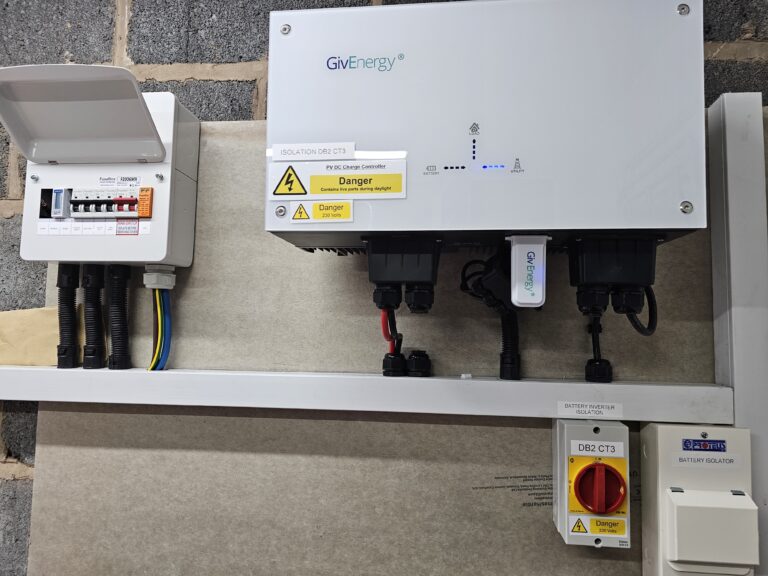
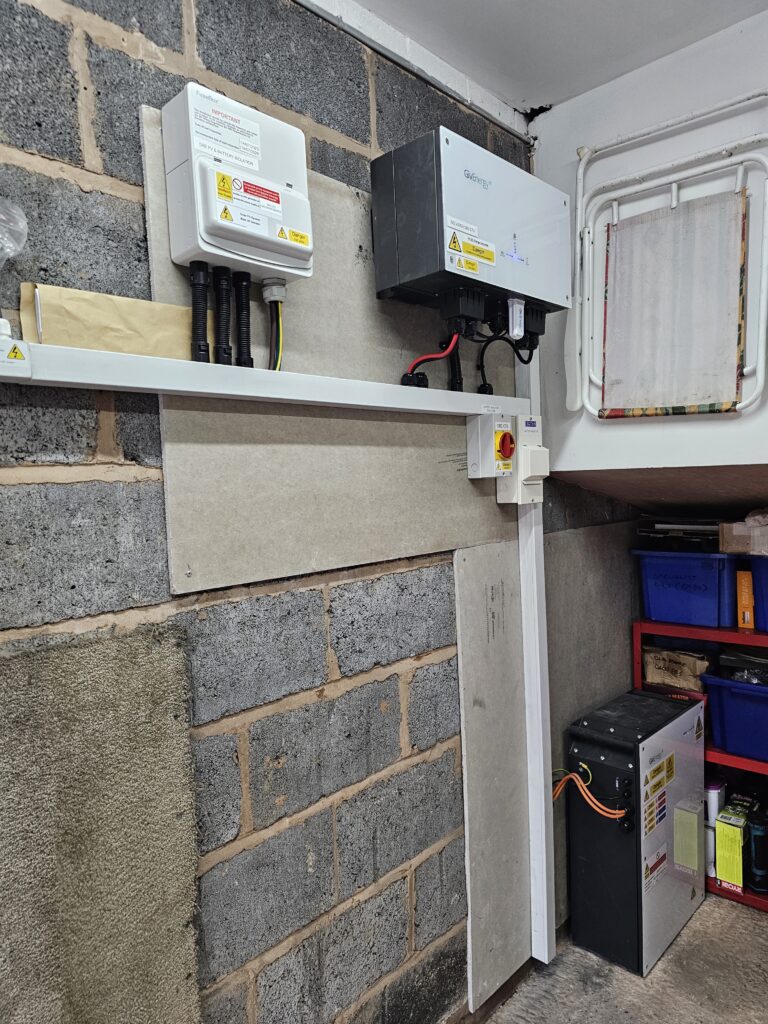

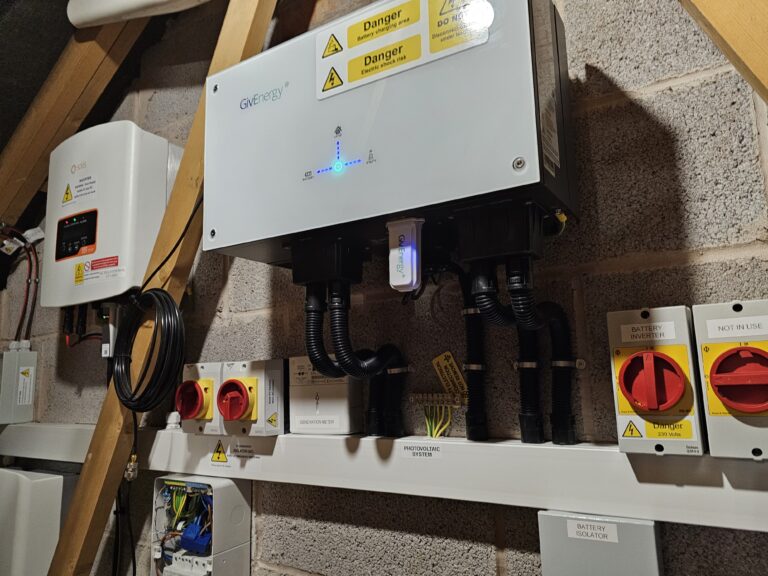

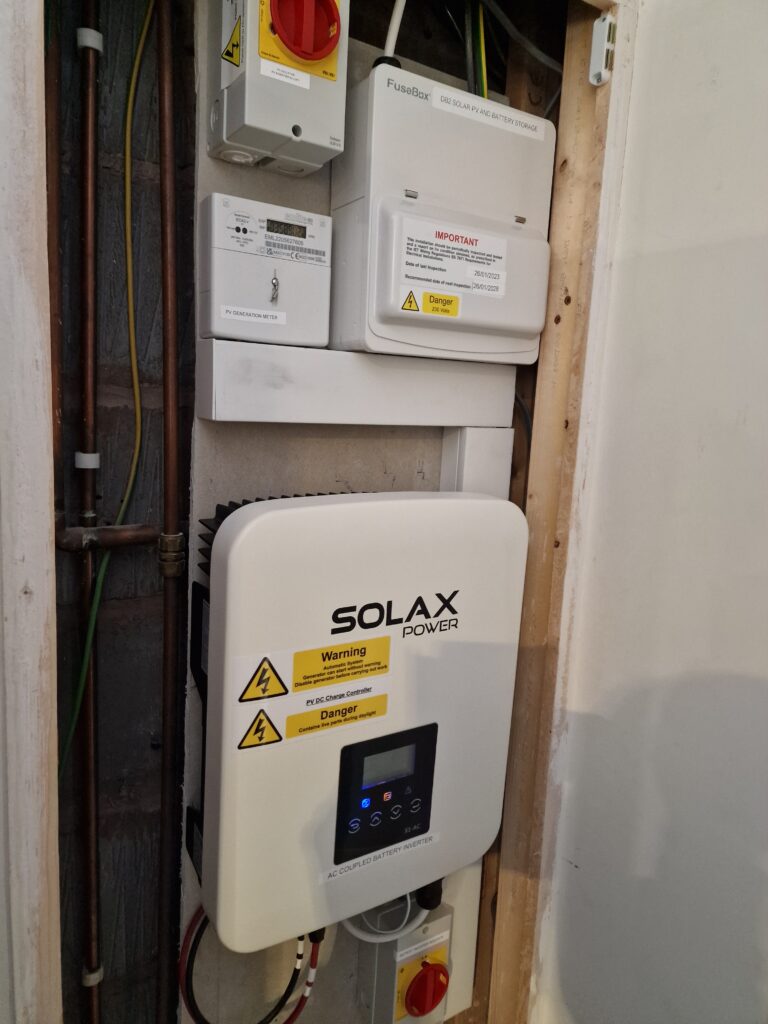
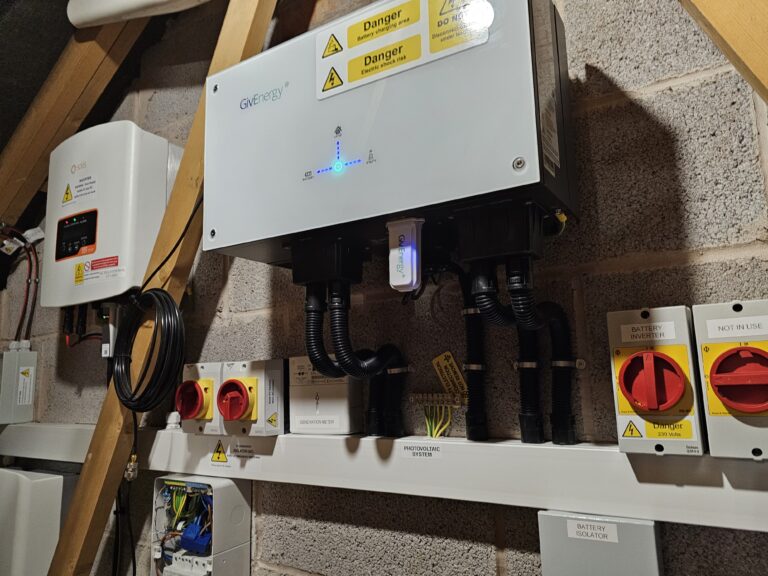

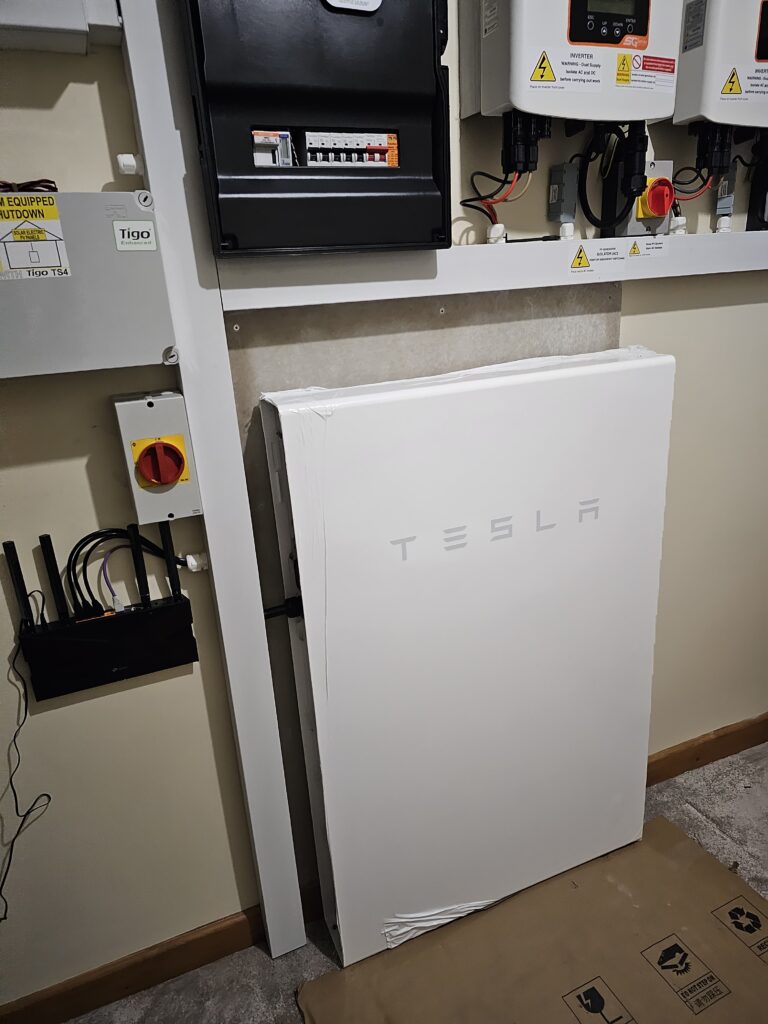
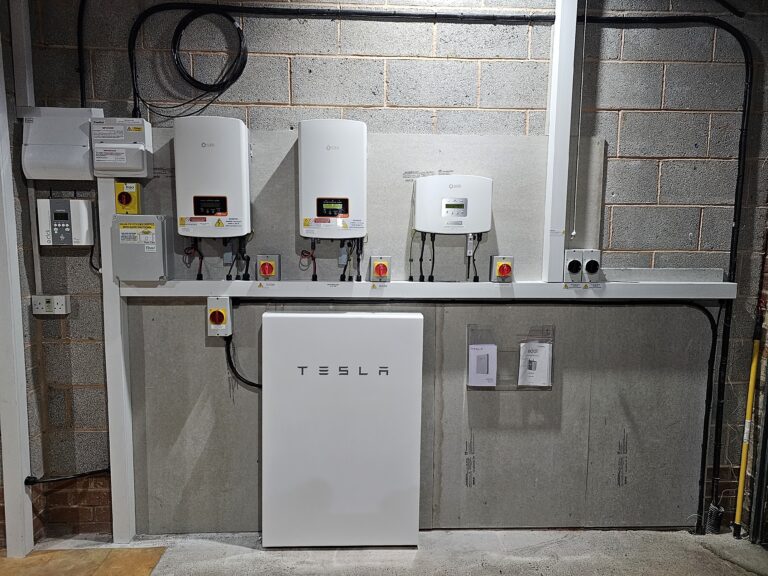
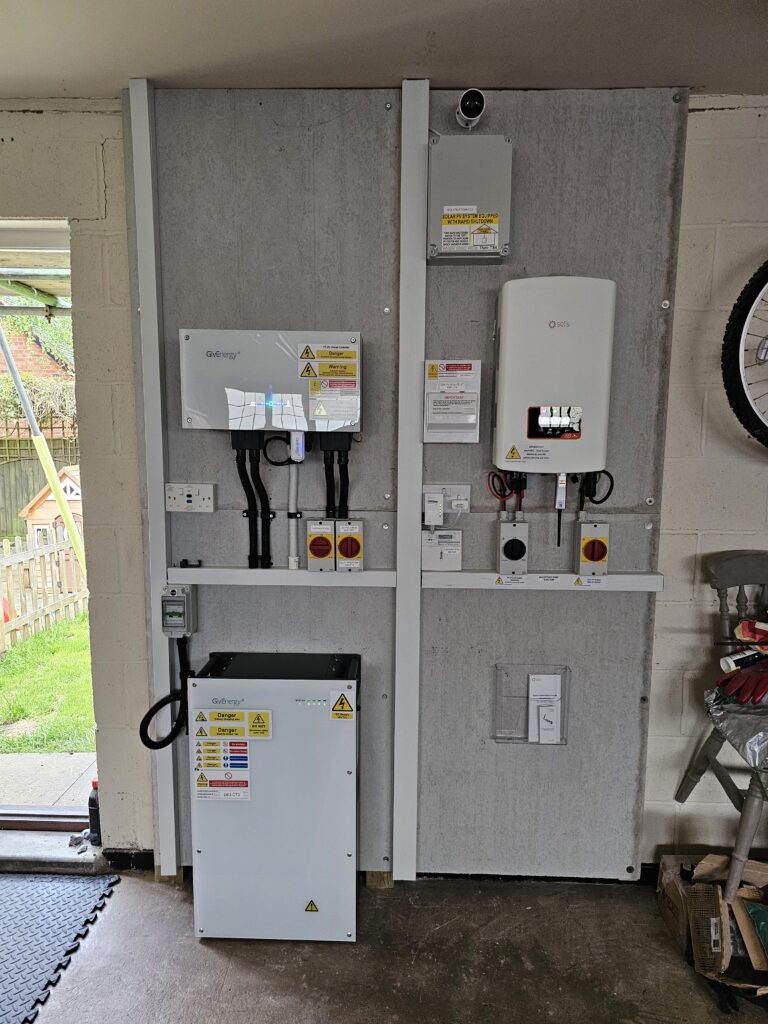
EXCELLENTTrustindex verifies that the original source of the review is Google. Gary installed an EV charger in my property. Great communication and very organised. Excellent service. More than happy to recommend him.Posted onTrustindex verifies that the original source of the review is Google. EV charger fitted efficiently with tidy finish. Good explanation/ support with finding most suitable product throughout.Posted onTrustindex verifies that the original source of the review is Google. Gary was amazing from start to finish, I received my quote on the same day as my enquiry and he answered any questions I had. The installation was fantastic and extremely neat, walked me through all the steps necessary to setup the charging app too. Couldn’t recommend him more!Posted onTrustindex verifies that the original source of the review is Google. Another installation by EV-PV, everything completed on time with no issues, would recomend and certainly use againPosted onTrustindex verifies that the original source of the review is Google. Gary was fantastic - very friendly and knowledgeable. I would definitely recommend him .Posted onTrustindex verifies that the original source of the review is Google. Good communication prior to the installation and work carried out to a high standard. Gary was very friendly and considerate when carrying out the work. Highly recommended!Posted onTrustindex verifies that the original source of the review is Google. Gary was totally awesome top job, top bloke and most importantly top price 👍🏻Posted onTrustindex verifies that the original source of the review is Google. Gary is a true professional and a master of his trade. Gary removed an EV charger from my old address to my new address, he was friendly, professional and punctual, the quality of his work is second to none. A pleasure and a rare find. Recommend 100%Posted onTrustindex verifies that the original source of the review is Google. Gary installed an EV charger for us. Did a great job, even though it meant taking up carpets and floorboards! Very happy to recommend. Excellent service from start to finish.
